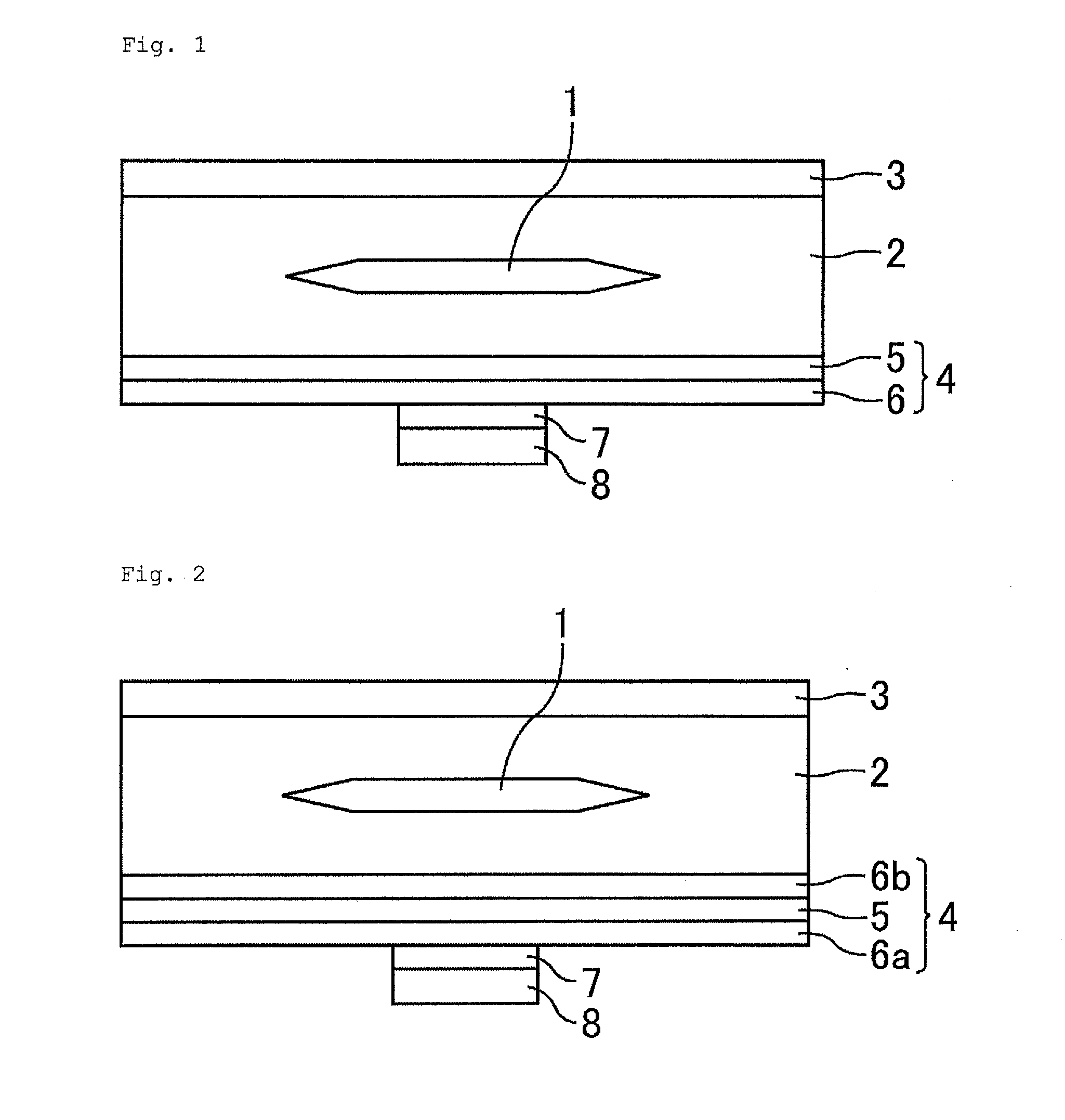Backsheet for solar cell module, laminate, and solar cell module
a solar cell module and solar cell technology, applied in the field of backsheets for solar cell modules and to laminates and solar cell modules, can solve the problems of poor adhesiveness of the eva used as sealant, the inability to realize the practical level of epoxy resin coating materials, etc., and achieve the effect of preventing water infiltration
- Summary
- Abstract
- Description
- Claims
- Application Information
AI Technical Summary
Benefits of technology
Problems solved by technology
Method used
Image
Examples
preparation example 1
[0191]202 mass parts of a curable TFE-based copolymer (Zeffle GK570 from Daikin Industries, Ltd., solids fraction=65 mass %, hydroxyl value=60 mg KOH / g, solvent: butyl acetate), 263 mass parts titanium oxide (D918 from Sakai Chemical Industry Co., Ltd.) as a white pigment, and 167 mass parts butyl acetate were preliminarily mixed by stirring; this was followed by the introduction of 632 mass parts glass beads having a diameter of 1.2 mm and dispersion for 1 hour at 1500 rpm in a pigment disperser. The glass beads were then filtered off using a #80 mesh sieve, and 283 mass parts of a curable TFE-based copolymer (Zeffle GK570) and 85 mass parts butyl acetate were added to the resulting solution to prepare a white dispersion material.
[0192]100 mass parts of this white dispersion 1 and 7 mass parts of a curing agent (Sumidur N3300, Sumika Bayer Urethane Co., Ltd., corresponds to 1.0 equivalent per 1 equivalent of the curable functional groups in the curable TFE-based copolymer) were ble...
production example 1
[0193]A PET film (Lumirror S10, from Toray Industries, Inc., thickness=250 μm, sheet A) was used as the water-impermeable sheet; the coating material 1 prepared in Preparation Example 1 was coated on one side of this sheet A using a coater to provide a dry film thickness of 10 μm; and drying was carried out for 2 minutes at 120° C. The other side was also similarly coated and dried to produce a backsheet A1 having a three-layer structure.
[0194]The surface on the junction box side of the thusly produced backsheet A1 (the surface that will be bonded in the step described below with the junction box across an interposed adhesion layer) was subjected to treatment with a corona discharge treatment device at a line speed of 100 m / minute and a discharge intensity of 1 kW to produce a surface-treated backsheet B1. The wetting index of this corona discharge-treated surface was 46 dyn / cm.
production example 2
[0195]The surface on the junction box side of the backsheet A1 produced in Production Example 1 (the surface that will be bonded with the junction box across the interposed adhesion layer in the step described below) was subjected to treatment with a corona discharge treatment device at a line speed of 150 m / minute and a discharge intensity of 1 kW to produce a surface-treated backsheet C1. The wetting index of this corona discharge-treated surface was 38 dyn / cm.
PUM
| Property | Measurement | Unit |
|---|---|---|
| wetting index | aaaaa | aaaaa |
| thickness | aaaaa | aaaaa |
| mol % | aaaaa | aaaaa |
Abstract
Description
Claims
Application Information
 Login to View More
Login to View More - R&D
- Intellectual Property
- Life Sciences
- Materials
- Tech Scout
- Unparalleled Data Quality
- Higher Quality Content
- 60% Fewer Hallucinations
Browse by: Latest US Patents, China's latest patents, Technical Efficacy Thesaurus, Application Domain, Technology Topic, Popular Technical Reports.
© 2025 PatSnap. All rights reserved.Legal|Privacy policy|Modern Slavery Act Transparency Statement|Sitemap|About US| Contact US: help@patsnap.com



